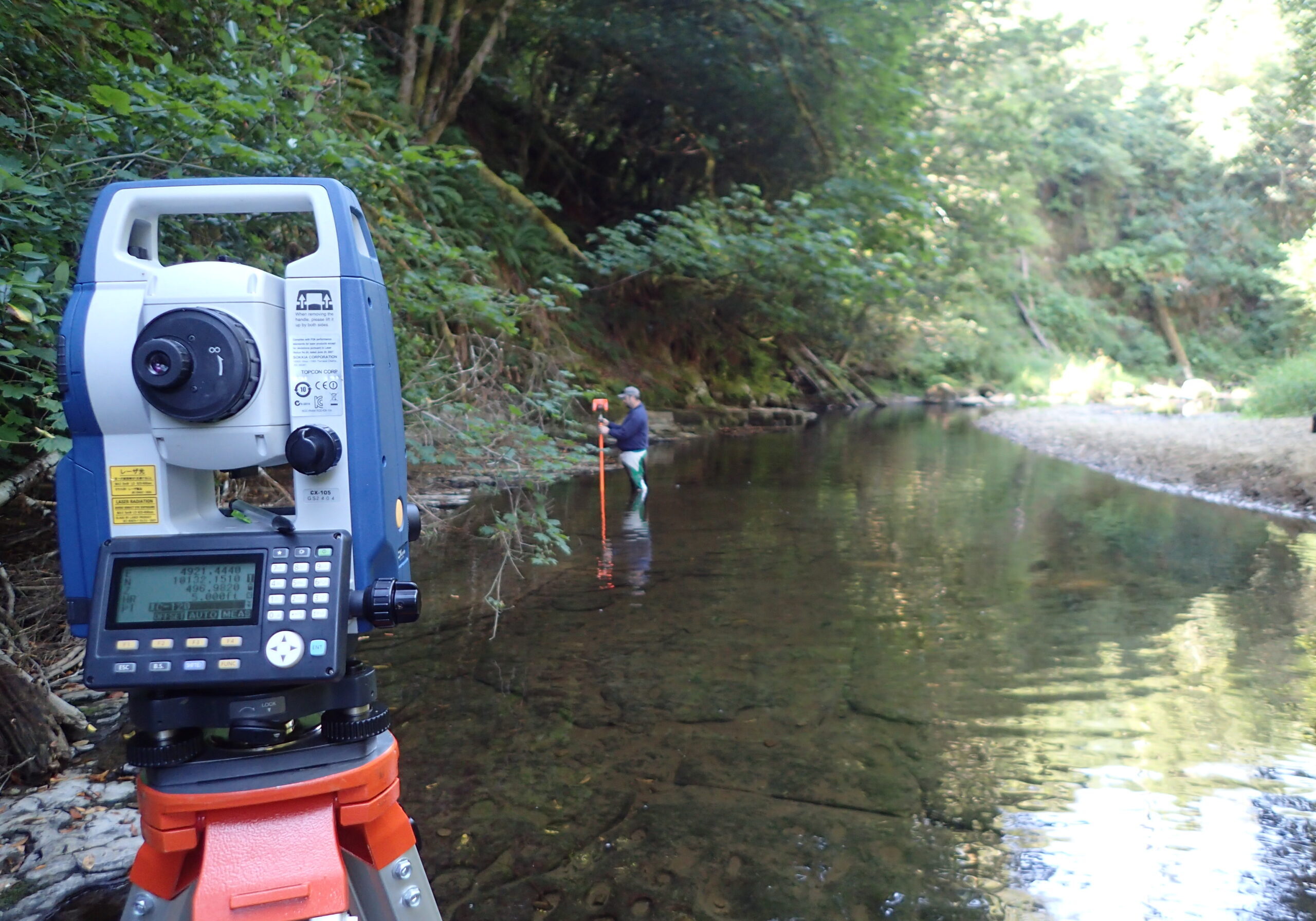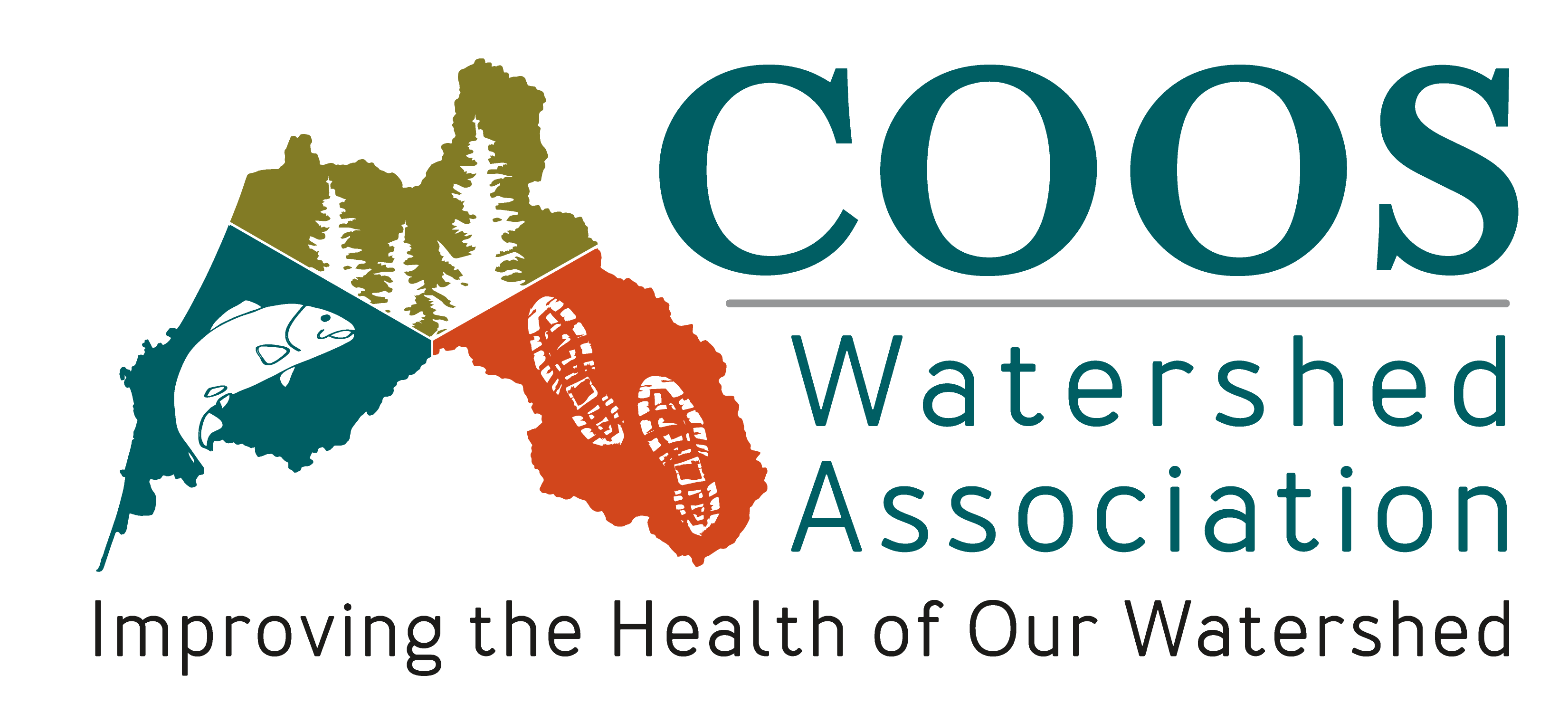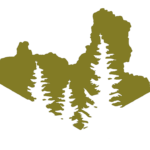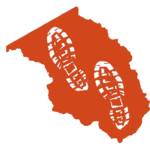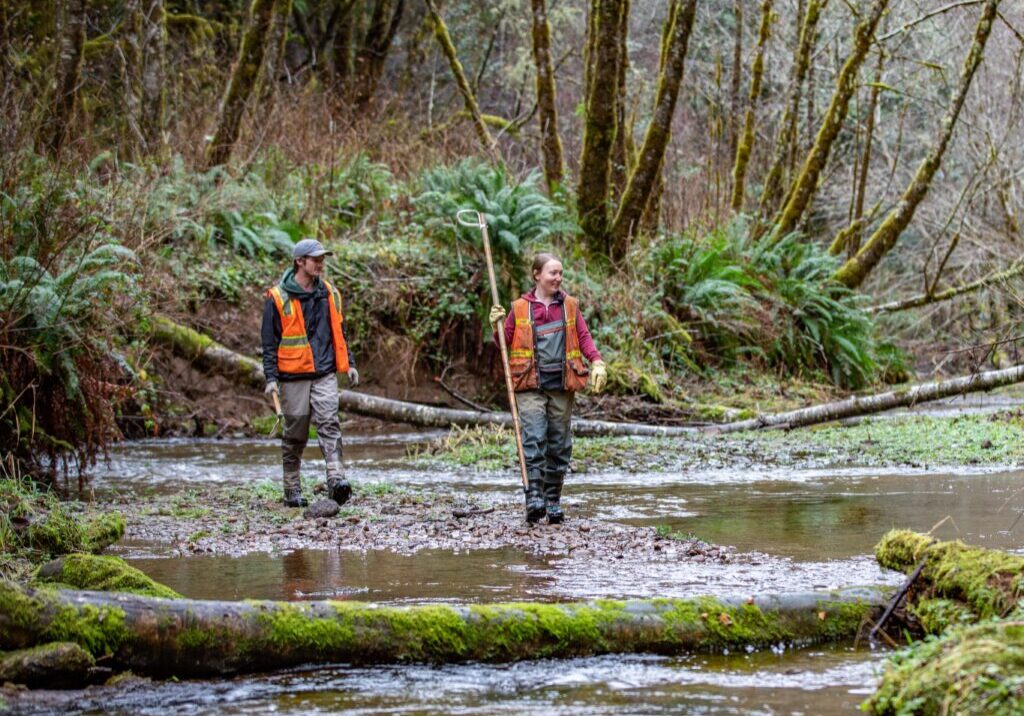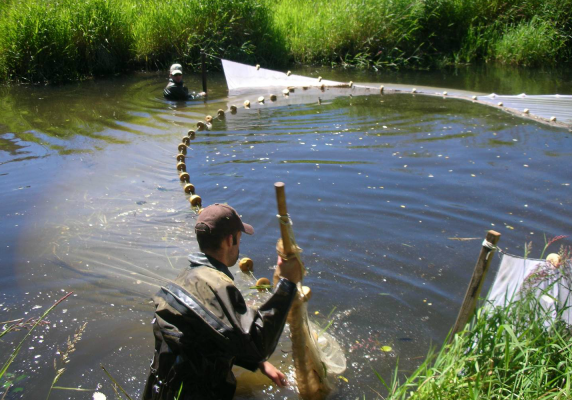Salmon Monitoring
Recovering coho populations (and the habitat they share with other aquatic organisms) is one of the cornerstones of our mission
Water Resource Monitoring
Long-term stream-gauge monitoring helps us understand watershed health and ecosystem processes.
Habitat Monitoring
We work to understand habitat conditions now so that we can implement targeted, high-impact restoration for the future.

Water resource monitoring
Long-term stream-gauge monitoring helps us understand patterns in watershed health. This is critical not only to effectively manage populations such as coho salmon, but also to better understand watershed level ecosystem processes, particularly in the face of climate change.
For 15 years the Coos Watershed Association has operated streamflow gauging stations to monitor water level and volumetric discharge (flow) on local streams. This real-time information, updated every 15 minutes, helps us understand a broad range of watershed conditions that impact the ability of aquatic habitats to respond to perturbations, whether natural, human-related, or the result of restoration actions. Specifically, our stream gauges track hydrological, meteorological, and water quality conditions, which need to be at certain levels to support healthy aquatic life. This info also comes in handy for monitoring conditions for recreation; thus, our stream gauge levels are checked by a wide audience of end users.
What started as three gauging stations on the East Fork Millicoma River has since grown into a robust network of nine stations on the South Fork Coos, West and East Fork Millicoma, Tioga, Winchester, Tenmile, Eel, Whiskey Run and Marlow. Data from five of these gauges are uploaded every 15 minutes on our website. There are nine other stream gauges outside of CoosWA’s network operating south of the Umpqua River (18 stations total).
Habitat monitoring
We work to understand habitat conditions now so that we can implement targeted, high-impact restoration in the future.
The Coos watershed is over 600 square miles in size, and each year, we restore a little more of it through our watershed restoration program. But before we can implement restoration projects, we must first gather baseline information in each sub-basin that helps us prioritize where to focus our efforts. Aquatic Inventory (AQI) surveys, conducted by our Fish Monitoring Team, are the first step to understanding current stream function in any given area. We then use survey results to develop site-specific restoration projects that improve salmon habitat and water quality in the areas that need it most. Click here to read our AQI protocol and Restoration Action Plans.
